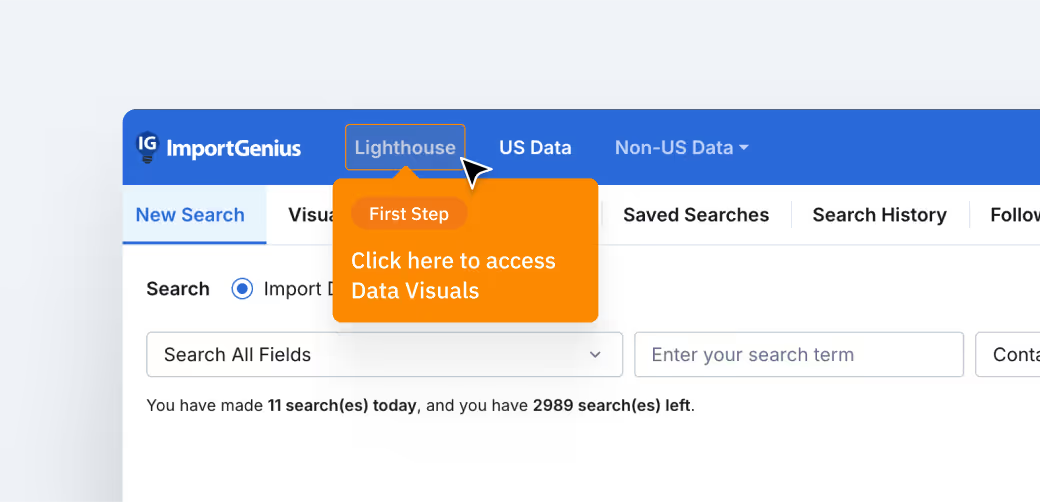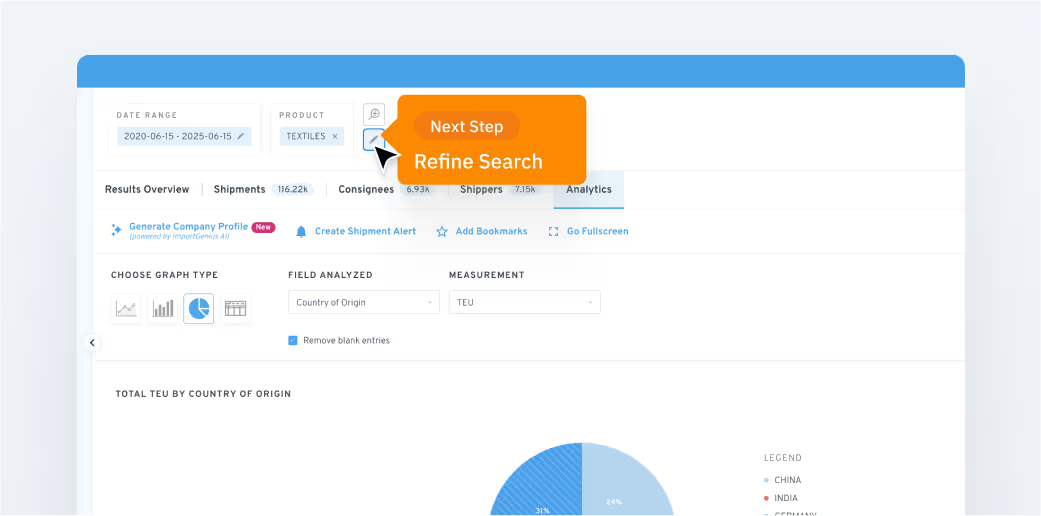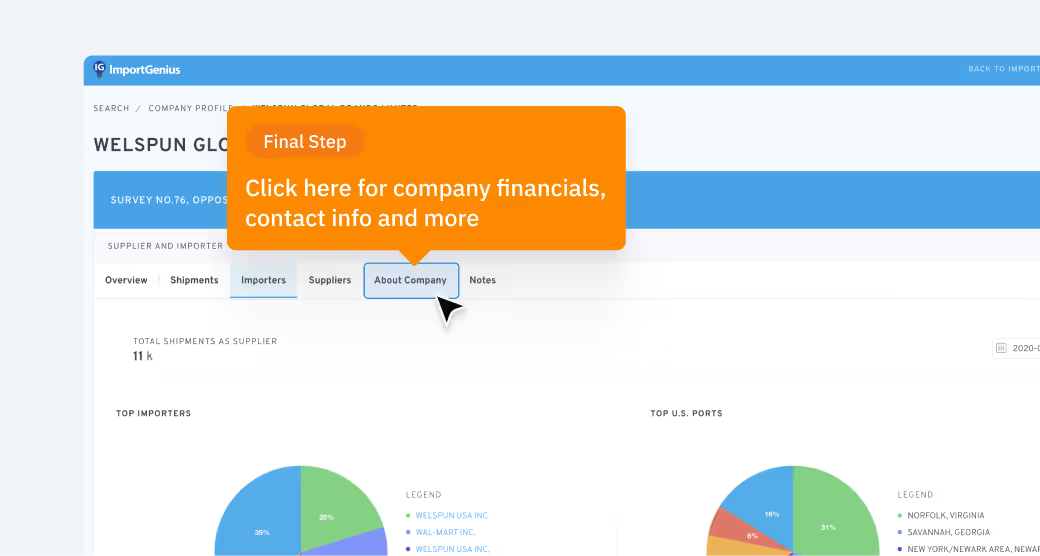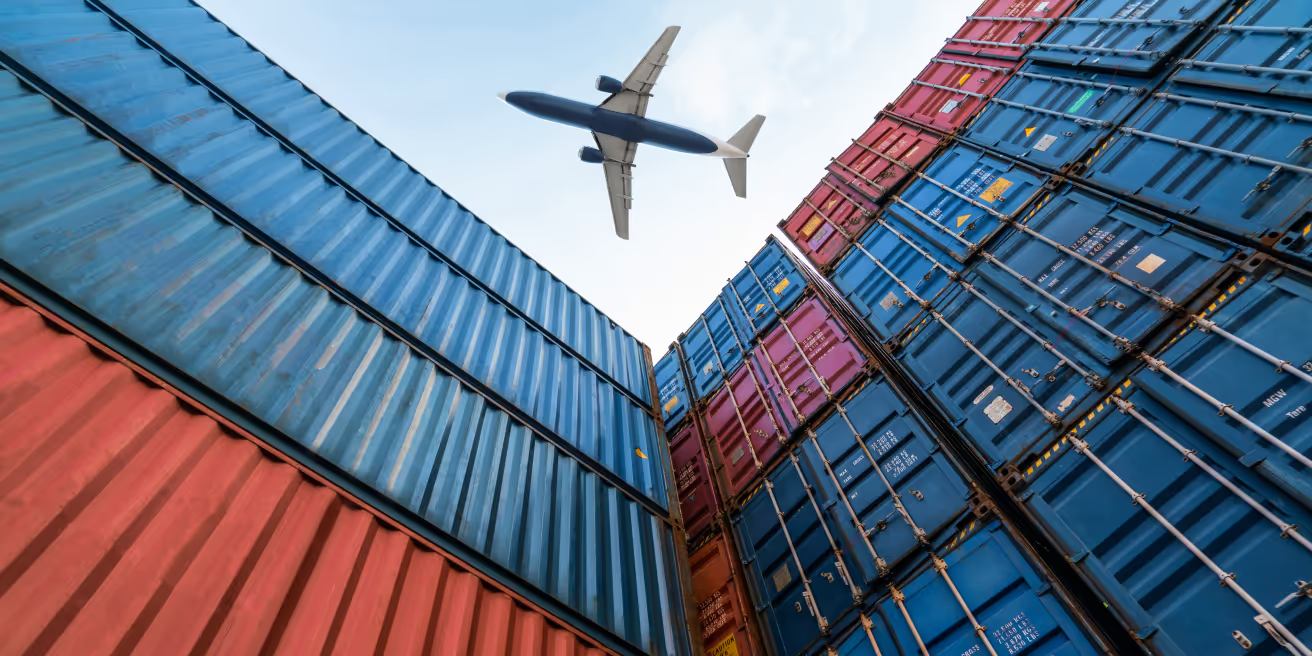Combine shipment manifests with artificial intelligence to source new global suppliers, minimize tariff exposure, and more
What you’ll learn in this guide:
- Identify alternative suppliers using verified shipping data instead of unreliable directories
- Validate supplier capabilities with objective customs records before making commitments
- Reduce tariff exposure by diversifying across multiple proven countries and manufacturers
- Build supply chain resilience that adapts to weekly policy changes and trade disruptions
Time required: 2 hours to complete comprehensive supplier analysis
Best for: Procurement directors, supply chain managers, C-suite executives developing international supplier relationships
The fast-rising risk of single-source supply dependency
How are businesses supposed to plan for new tariffs when the tariffs keep changing? The traditional role of government in the market — to establish clear rules, provide a level playing field, and then get out of the way of private enterprise — simply no longer applies. Here are some of the ever-shifting tariff goalposts from June 2025 alone:
- The United States doubled tariffs on steel and aluminum from 25% to 50%.
- The United States later applied a 50% tariff specifically to home appliances made of steel and aluminum.
- Negotiations with China produced a deal that actually increased tariffs on that country, from 30% to 55%.
- Trade negotiations with the other G7 nations at their annual summit led nowhere. Tariffs on those countries’ imports, currently set at 10% (except for Canada, at 25%), are slated to more than double in the coming weeks.
“In this environment, the biggest risk for any importer is their over-reliance on one specific country as a source of goods or supplies,” says ImportGenius President Chris Schafer. “Over-reliance leaves businesses at the mercy of a single trade policy shift. The pace of tariff decisions — which currently change weekly, if not daily — now sets the pace for business decisions.”
That’s why companies are seeking to diversify their global supply chains by lining up new suppliers in multiple countries, to better mitigate their risk of tariff exposure. And they are seeking to become nimbler, able to shift business from one country to another as circumstances warrant.
The ImportGenius database — updated daily with shipping manifest data from importers around the globe, and whose newly-introduced, AI-powered Genius Company Profiler allows users to quickly discover and profile potential new suppliers within minutes — is the ideal tool for reorienting any company’s global supplier strategy.
[CTA]
Let’s examine how it works using a specific hypothetical example: a U.S. based textile importer who wants to diversify his global supply chain to mitigate its current over-reliance on Chinese manufacturers.
Step 1: Assess sector imports by country of origin
The Challenge: Reach beyond traditional market research to get the facts about which countries actually have established, successful supply chains.
The Solution: ImportGenius shows exactly where your industry’s imports come from based on verified customs records, not estimates or projections.
ImportGenius’ Lighthouse data service, accessible from the main search page, provides quick visual summaries of US import trade data by volume, product, country of origin and more.

For our hypothetical textile importer, a quick product search for “textiles” quickly generates results for more than 110,000 textile shipments in the last five years. Moving from the Results Overview to the Analytics function allows users to break down results by TEU volume and Country of Origin, showing that, after China, India, and Germany are the largest exporters of textiles to the United States. The next step is to refine the search for a specific country.

Step 2: Find textile suppliers from new countries
The Challenge: Avoid directory-driven cold outreach to unqualified partners.
The Solution: Use ImportGenius to reveal country-specific suppliers with substantial shipping volumes and consistent activity patterns.
The database allows users to refine the search to include a specific country of origin, which can then identify both the busiest logistics firms — and specific manufacturers of the product. In this case, searching solely for textile imports from India reveals large quantities of shipments from Expeditors International, as well as direct shipments from two major manufacturers: Welspun and Skaps.

With over 2,000 TEUs of imports to the United States, Welspun could serve as a useful source in a more diversified supply chain. The next step is to find out more about this potential new supplier.
Step 3: Get AI-driven, in-depth supplier insight
The Challenge: Get objective verification beyond company websites, marketing materials and sales presentations.
The Solution: ImportGenius provides manifest-level shipping history, port usage patterns, and customer and operational detail — intelligence that’s impossible to fabricate or manipulate.
A mouse-over of any company name will highlight it in blue. By highlighting and clicking on Welspun, users will see its Company Profile. This unique AI-powered tool, developed by ImportGenius, provides a wealth of information on any specific company, including the U.S. ports it routinely ships to and its other customers, which can be useful for importers who also want to keep tabs on who their competitors’ suppliers are.

And that’s just the tip of the iceberg: the About Company tab will provide additional information on key product lines, major competitors, financials and key contacts.
Final Step: Scale your diversification across industries
This same search could be repeated for any industry active in global trade, from automotive parts to Xerox machines. No matter the industry, the ImportGenius interface can provide hard data and extractable insights in a matter of seconds.
The global economy remains in turmoil. Trade wars and military conflicts are disrupting supply chains for every industry that relies on international trade, while ever-changing tariff levels mean increased costs for importers.
But there’s another new factor at work in global trade that works in business’ favour: digital disruption. Daily manifest updates from all vessels entering U.S. seaports have resulted in a massive trove of searchable trade data. The analytical power of the ImportGenius interface, combined with power of artificial intelligence, can now provide importers with a level of insight into global trade operations that was impossible as little as five years ago.
“Many importers feel they are at the mercy of forces beyond their control, leaving them unable to plan ahead,” says Schafer. “The reality is that, with these tools at their disposal, they have far more options than they ever believed. And the companies that adopt them first, and learn to use them best, will emerge as the market leaders.”
Key Takeaways
In today's rapidly shifting trade environment, over-reliance on single-source suppliers leaves businesses vulnerable to weekly tariff changes and policy disruptions. This guide demonstrated how to:
- use verified shipping manifests and AI-powered company profiling to identify alternative suppliers, validate their capabilities with objective customs records, and build supply chain resilience across multiple countries.
- leverage trade data analysis instead of unreliable directories to can reduce tariff exposure, conduct thorough supplier due diligence, and develop competitive intelligence that adapts to changing global conditions.
The companies that master these data-driven diversification strategies will emerge as market leaders in an increasingly unpredictable trade landscape.
Ready to see how this works?

Ready to see how this works?



More blogs & reports



.png)

